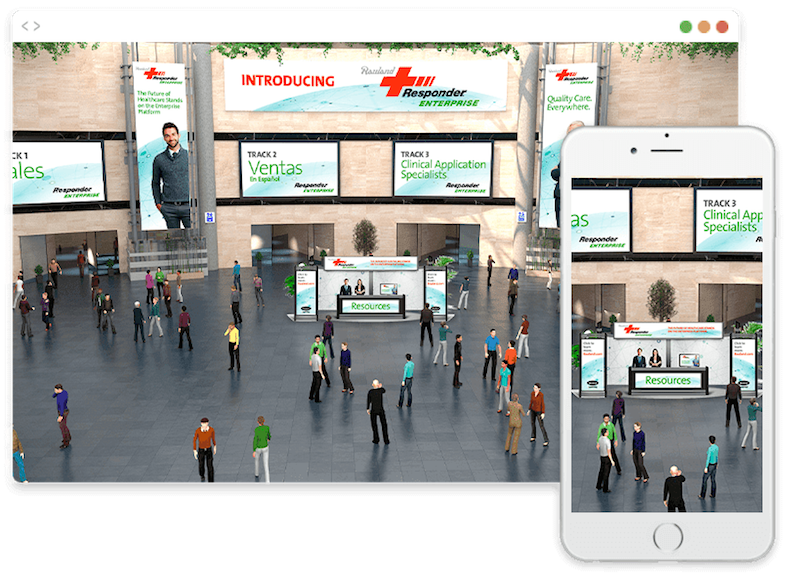Welcome back to the COVID Chronicles! In part 2 in our series of digital transformations motivated by the pandemic, we’ve rounded up a bunch of different digital tools that help businesses sell their products & services online.
When countless businesses around the world were suddenly cut off from providing in-person services to their customers, a frenzy was triggered that forced them to adapt in two ways:
- Pivot services from physical/in-house to digital/take-home.
- Digital sales enablement.
Many businesses have risen to the challenge and shown remarkable rapid innovation.
For all of those who are yearning for things to go back to ‘business as usual’, we’ve got bad news – that probably won’t happen! Chances are that we’ll emerge with a ‘new normal’, and one of the fundamental shifts in the COVID-19 era will be a transition to eCommerce first buying behaviour.
The good news is that there is a wealth of online business opportunities for those who are able and willing to cater to customers’ new appetite for digital convenience and flexibility.
If you’ve read our previous blog post about digital pivots, you might have been wondering how these businesses went about their digital transformation and starting an online business. In that case, this blog post is for you.
Let’s dive right in!
Take Your Store Online
Whether you want to start an online business or you want to take your physical business online, there are a lot of options.
When it comes to eCommerce tools and solutions, there are the big 3: Shopify, WooCommerce, and Squarespace Online Stores. Chances are that you probably know about those, so we’ll spend a bit more time on some lesser-known, beginner-friendly solutions instead.
Wix is a simple, drag-and-drop website builder that also offers eCommerce functionality. The tool includes lots of eCommerce store templates and stock photos and is fully hosted. While it’s super easy to set up and use, it’s not a dedicated eCommerce platform, so some users might find it a bit basic.
Similarly to Wix, SiteBuilder is also a drag-and-drop website builder. It’s super intuitive and includes a variety of eCommerce tools and templates. One of its drawbacks, though, is its limited functionality and eCommerce customization for advanced users.
Comparable to Shopify, BigCommerce can be used to create a stand-alone eCommerce store or be used as an eCommerce plugin on an existing website.
While it has no native ePOS, BigCommerce has lots of great functions to help you manage your store, including promotions and a live shipping rate calculator. The platform lets you sell across a range of channels and integrates with Amazon, eBay, and social media.
- Selz
Selz is another eCommerce tool you can use to either build an online store from scratch or use it to enable eCommerce on an existing website.
It’s easy enough to use that you don’t need a developer and design background, and it offers all the features and tools you need to get your eCommerce store off the ground, including lots of themes, ePOS, and social selling. As an added bonus, it’s multilingual if you want to reach customers in french-speaking jurisdictions or abroad.
Delicious Food Ordering Systems

If there’s one thing we don’t seem to tire of during the COVID-19 lockdown, it’s good food! From our usual fast food to grocery essentials and fine dining, the appetite for online food ordering has gone through the roof!
For restaurants, launching or expanding food delivery options has been the only lifeline during the pandemic. But how? Smaller or independent restaurants might ponder implementing their own online ordering system. After all, the alternative is handing over control and hefty commissions to third-party delivery apps such as SkipTheDishes and Uber Eats, which takes a big bite out of an already slim profit margin.
If you want to get started with an online ordering system, the great thing is that you have a lot of options available. We’ll break down a few of them for you.
With Flipdish, restaurants can build a branded, food ordering website, app, or kiosk. A user-friendly and easy way to kickstart your restaurant’s online offering.
You don’t need an existing website to get started with Flipdish, but you will need to source an ePOS (payment system) and a third-party delivery system – if you want to offer delivery, of course!
Similarly to Flipdish, MenuDrive is a tool for restaurants, bars, or breweries to set up an online ordering system and app and lets you access their online marketing tools.
The system integrates with the restaurant’s existing website and lets you tailor the ordering platform to your brand. To get ready for launch, you’ll need an ePOS system and a delivery service.
OrderStack is another tool that lets restaurants create a food-ordering system that integrates with their existing website. This all-in-one system offers an integrated ePOS system, and you’ll need no third-party apps to get started.
If you don’t have a website already, OrderStack offers to create one for an extra fee.
A free ordering system?! Yup, GloriaFood’s online food ordering system pricing model is a bit different, compared to the other options out there. Whereas most other online ordering systems have tiered pricing models, start-up fees, and/or charge a commission, with GloriaFood you can go with a free, DIY-approach, or choose to pay for premium features and add-ons, such as ePOS system, promotions, and more.
Similarly to OrderStack, GloriaFood also offers to build a website for your business as part of its paid, add-on services.
Keeping up Professional Services

If you’re a personal trainer, coach, therapist, consultant, or provide any other professional service, chances are that you’ve been looking for digital tools that let you continue to provide your services.
When it comes to online meeting platforms during COVID-19, one platform, in particular, has managed to become synonymous with online meetings – Zoom. The platform has become so ubiquitous that it has even sparked the creation of a new word, ‘Zoom fatigue’, to describe the exhaustion that some people feel after having attended video meetings all day.
Whether you love or hate video conferencing, there’s no doubt that these tools have been key for business continuation during the pandemic, and Zoom is certainly not the only option available.
Let’s explore some of them.
You might have heard about both of Google’s meeting platforms, so we’ll use this 2-in-1 point to clear up some confusion about the difference between the 2 tools. Google Meet is Google’s new enterprise video conferencing software that comes in both a free and premium version with up to 250 participants and 100,000 live stream viewers. With the introduction of Google Meet, Google has announced that Google Hangouts will be phased out as per June 2020.
Poised for pandemic popularity, GoToMeeting just underwent a major update in 2019. As part of the new product offering, participants don’t need to download the platform to participate in meetings. In addition, the platform offers a number of useful features, including meeting recording, meeting transcription, and a virtual whiteboard. GoToMeeting also integrates with other business platforms such as Office365, Slack, G Suite, and Salesforce.
GoToMeeting offers a couple of different paid plan tiers, depending on how many meeting participants you need to accommodate.
Whereby is another easy-to-use, flexible meeting platform that can be used straight from your browser. An interesting feature with Whereby is the ability to custom brand your video background.
If you have a smaller business, you might be able to get by with a free plan. Otherwise, you can upgrade to get access to multiple users, admins, and meeting rooms.
Go Digital with Events & Conferences

Ah, the excitement of going to an event or conference! Don’t let physical distancing prevent you from getting people together and knowledge-share… virtually.
With the help of virtual event tools, 2020 could become the training ground for the future of conferences.
Hio Social is an event software and app that’s specifically designed for recurring events. Hio offers a couple of different options for virtual events: host-moderated events or a ‘virtual lounge’ format for networking, whether you want to create a free or paid event.
With the host-moderated events, Hio integrates with Zoom (yes, it really is everywhere!) and can accommodate up to 100 attendees and offers useful facilitator tools such as the ability to break attendees up in smaller groups for more intimate discussions. With the virtual lounge, attendees only need a Hio account to attend and there’s no limit on the number of people who can join the networking event.
This virtual event software is an all-in-one tool for organizing digital events and conferences. From ticket sales to live streaming, virtual exhibitor booths, and networking sessions, Accelevents offers it all.
As close as possible to a physical event, Accelevents strives to re-create the human experience through AI-powered cocktail hours, a virtual lobby where attendees can get a conference overview, and interesting functions such as building a virtual tradeshow booth.
vFairs is another comprehensive virtual event software. Whether you want to host a conference, job fair, trade show, or a virtual open house, this tool can help you make it happen.
As part of the service, you’ll get a custom event landing page for your event along with lots of interactive features such as a virtual, 3D lobby, virtual exhibitor booths, a virtual briefcase, and interactive networking tools.
Virtual Workouts

One of the harder-hit industries from the COVID-19 outbreaks is the fitness sector, as gyms and fitness studios are among some of the last businesses to get the government go-ahead to reopen. Even so, many customers might have settled into new, convenient virtual fitness routines after a long lockdown.
Lots of personal trainers and gyms have found creative ways to keep their clientele engaged during the outbreak, including posting classes on YouTube or using their social media channels.
For lots of the gyms and studios, though, the big question is how to monetize these virtual offerings? Thankfully, there are digital tools that let you develop digital selling options.
The fitness app and business software MINDBODY now offer their clients a (for now) free service where they facilitate live streaming of classes.
Video and live streaming is a way for gyms and studios to offer virtual services to their clients, and they are, of course, fully integrated with MINDBODY’s booking software for easy launch.
The fitness studio admin system and instructor productivity app FitGrid now offers a new live streaming service to help studios maintain a revenue stream during the pandemic.
FitGrid LIVE deploys both Zoom and MINDBODY for a streaming service that’s integrated into MINDBODY class booking software.
This online training and coaching solution has been around since long before physical distancing became a phenomenon.
With gymGO, fitness professionals can offer live streaming and on-demand classes. The system works for both one-on-one sessions or group classes with up to 100 attendees. For the latter, participants can see and hear the trainer but not each other.
Zype is a tool that’s tricky to categorize because the potential for digital sales enablement is so broad! It’s an all-in-one digital video distribution and management hub where businesses such as fitness studios, publishers, educators, and more facilitate, distribute, and monetize their video content – whatever that might be!
Get Started on Your Digital Transformation!
This roundup of digital tools has hopefully provided some inspiration for starting an online business. There’s never been a better time to shift towards eCommerce or digital services. After all, this COVID-19 pandemic has converted swaths of consumers to digital-first, eCommerce fans.
If you’re struggling with getting your eCommerce business off the ground, we’re always here to help! Our experienced team can help you with eCommerce marketing campaigns to help grow your online business exponentially.
Need help with B2B Digital Marketing?
Learn more about Konstruct's B2B Digital Marketing Services
More B2B Digital Marketing Resources
- B2B Manufacturing Marketing That Actually Works in 2025
- Proving Marketing’s Value in 2025 for B2B
- Perform This 1 Exercise to Increase Your Close Rates and Drive Revenue Lift
- Should You Be Doing CRO for Your B2B Website?
- How to Set Your Marketing Agency Up for Early Success
- Your B2B Go-to-Market Strategy Is Failing: 10 Red Flags You Can’t Ignore
- The *Definitive* 8 Best Manufacturing Marketing Agencies in North America [2025 Edition]
- Don’t Panic: How to Diagnose Dropping B2B Marketing Metrics
- The Top 3 Digital Marketing Opportunities for Manufacturers in 2025
- Konstruct Ranks on Top Growing Companies List for 2nd Year in a Row


